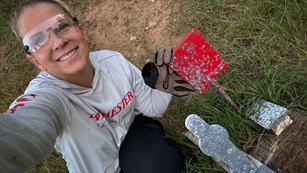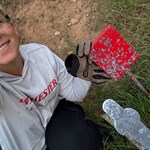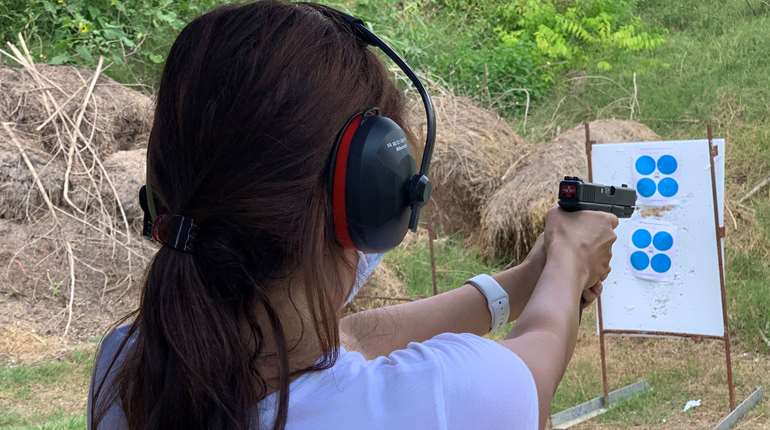
It began silently just after the witching hour one April in 1983, but the nightmare of the Beasts of Pavagada wouldn’t end until the hills rang with shots and voices—both human and otherwise. Nearly 40 years later, neither the local authorities of the time nor any after-the-fact observers know for sure what the beasts were or why they did what they did. What is known is that the beasts stole and consumed at least five children, most of them girls, right from under their families’ noses. That’s where the nightmare began.
The first to be taken was a 5-year-old girl who had been playing in her front yard just after midnight in the village of Pavagada, India. In addition to being first, she was one of the only ones to disappear unseen—over time, like human serial killers, the beasts would grow much bolder. A search party, formed at dawn, eventually found the girl’s scattered remains. There are many apex predators in that area of India, most notably wolves; it’s rare that they prey on people but certainly not unheard-of. So it was that this first death caused little remark.
That situation changed very quickly when the second girl was taken, this time from right next to her mother in bed, just a few days later on May 7. Unlike the first, her remains were never found, but a member of the search party formed to look for her noted a pair of glowing green eyes in the forest. Again, it was assumed that the girl had left her bed without waking her mother and had met upon a pack of wolves.
This time the respite lasted only four days. When a two-year-old girl disappeared—again from her parents’ bed—in the middle of the night unseen, the village of Pavagada began to panic. Then, a few days after that, another toddler girl disappeared from next to her mother in bed. Both times, searchers did find some scattered clothing that belonged to the girls. They also found a great number of paw prints in the earth.
What they didn’t find—what they should have found—were drag marks.
There were other aspects of the Pavagada beast murders that are tough to reconcile with animal predation. There were other things that should have been there that weren’t, like blood. Then there were the things that were there that shouldn’t have been … such as the rocks that were thrown at the father of one of the girls as he looked for his daughter. There is the question of how all of these girls were taken from the literal sides of their sleeping parents. Another pressing question regards about the scant remains that were found, which consisted of mostly skulls. Finally, it seems a bit too much of a coincidence that every victim of the Pavagada Beasts was her family's only daughter.
Almost all human societies feature legends of people who can shift into an animal’s shape and back. The vast panoply of Hindu belief and Indian folklore is no exception, although—and this is unusual—werewolves aren’t really part of the mythology. However, there was at the time a known (and deeply taboo) tradition of sacrifice to the goddess Kali by a sort of black-magic practitioner called a tantrik. It was widely whispered that these extremely aberrant attacks on young girls were, in fact, the work of tantriks.
What the few witnesses saw, however, didn’t look human. Of the people who saw something, they all reported seeing a large canid shape, although a few of them said the coloring of it looked too red. Much more likely than black magic is predation, and there is another apex predator in that area of India that doesn’t hunt like a wolf. It may have been missed simply because many people don’t think of it as a predator, but as a scavenger: the striped hyena.
Advances in night-vision technology have taught scientists that hyenas are actually very effective hunters. It’s extremely rare for them to target human beings, but it does happen. What’s more, if they are going to hunt homo sapiens, they’re careful to target the smallest and most helpless of us. Finally, hyena’s jaws are tremendously powerful—powerful enough for them to consume animals whole, bones and all. The only thing that sometimes gives them trouble is the skull.
Whatever the cause, in 1983, the villagers of Pavagada had had enough. They rose up as one to defend their daughters. Hunting en masse with whatever weapon they had at hand, from firearms to swords, they swept through the forest like scythes. Nobody knows for sure just how many wolves were harvested, but what we do know is that there were some striped hyenas who met their ends as well. And, with that, the killings stopped.
Of course, Occam’s razor being what it is, the simplest solution is that the Pavagada Beasts were nothing but ordinary hyenas that got a taste for human flesh. That means it’s probably the correct one. But if there’s a sound in the night that should raise goosebumps on the back of your neck, perhaps the echo of hysterical laughter is more terrifying than a howl.















































